I. Beet Processing Industry Overview
1.1 Beet plant introduction
Beet is a herbaceous plant which plays multiple roles as food(edible roots and leaves) and sugar refining material in sugar industry as well as animal fodder in feed processing industry. As an important sugar crop, beet is cultivated globally in places where the temperature is between 15 and 19 ℃. At the present day, beet sugar’s annual output is around two-fifths of the world’s sugar production. In the last year, beet’s top five producing countries are Russia (45million Tons), France (33million Tons), United States (31million Tons), Germany (27million Tons) and Ukraine (18million Tons).
1.2 Beet varieties
Beet has four cultivated species: sugar beet, leaf beet, beetroot and fodder beet, each of them is respectively used for household or industrial purposes.
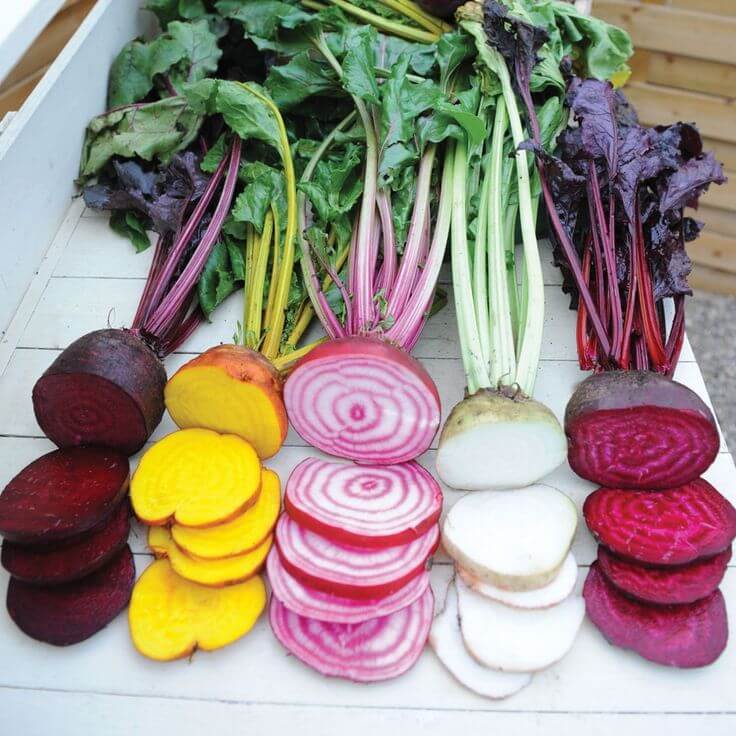
1.2.1 Sugar beet
In the 18th century, beet was firstly found that contains sucrose in Germany. Since the latter half of the 18th century in Europe, sugar beet has been commercially cultivated and processed to extract sugar which the amount of sugar extraction can vary from 10% to 20%. In addition to extracting sugar, sugar beet has been processed industrially to make spirit, sugar beet syrup and betaine.
1.2.2 Leaf beet
Leaf beet is suitable for cooking as the healthy diet. The data shows it is rich in nutrients like crude protein, cellulose, vitamins C, potassium, calcium, and iron. Cooking methods are very diverse, for example, young leaves could be eaten raw in the salad, while mature leaves can be added into soup or sauteed.
1.2.3 Beetroot
Beetroot has culinary and industrial uses, for example, beetroot is usually cooked as food such as Borscht, pickled beetroot, and beetroot juice. For industrial use, the betanin could be extracted from beetroot and used as a red food colorant to enhance food and beverage’s color. After beetroot processing, the rest root tail and the old root is a good material for brewing distilled spirits in the factory.
1.2.4 Fodder Beet
Fodder beet is a valuable juicy feed to be cultivated in autumn, winter, and spring. Fodder beet contains carbohydrate, mineral salts & vitamins and it is good for feeding pig, chicken and cow.
1.3 Future of beet processing industry
In sugar industry, beet and sugarcane are two important raw materials. Since the El Niño events occurred in 2015 and as a result could lead to the droughts, sugarcane’s production has been sharply reduced by the dry climate, resulting in a short supply in sugar market and the sugar price is still underpinned by strong global demand. However, as another necessary sugar manufacturing materials, beet is less influenced by the droughts and the demand for it is on the rise in the future. But the environmental problems, labor cost and sugar content losses(sugar content may decrease in harvesting and processing periods) remain to be worked out for beet cultivator & processor during the periods of cultivating and transporting beet to the factory. To solve these problems, automation technology, scientific storage method and waste treatment system need to be applied in factory production process with better equipment design and maintenance technology. Fortunately, our company’s sugar beet processing equipment and the production line with automatic technologies have been ordered to use in the food factory and individual enterprise in some European, American and Asian countries.
II. Beet Processing Technology
In beet processing industry, the technologies are mainly used in manufacturing beet products such as sugar, beet molasses and beet pulp, etc. Here is a detail table of the materials processed from beet:
| Material | Uses | Classification |
| Beet sugar | Basic food for human consumption. |
Products (materials which meet market demand and specifications.) |
| Beet molasses | Animal feed. The raw material for fermenting ethanol. | |
| Beet pulp (dried or compressed) | Nutritious animal feed. | |
| Beet leaves, beet tops, and beet tails | Fodders for livestock. | |
| Sugar factory lime | Soil improver material. | |
| Soil | Agriculture or civil work. | Secondary raw material (materials which may be used as a product when they meet the market needs.) |
| Stones and sand | Civil work to pave roads and streets. | |
| Waste during processing | Disposal. | Waste (materials which are useless other than to discard them) |
From the chart we can see: after the sugar being produced, beet’s by-product such as pulp, residue, molasses and the left tops & tails could be further processed and reused in various industries. To be specific, more details of the technology such as higher slicing rate, automatic juice extracting method and the subsequent split pile storage will be discussed below.
2.1 Beet sugar processing
2.1.1 Harvesting and delivering
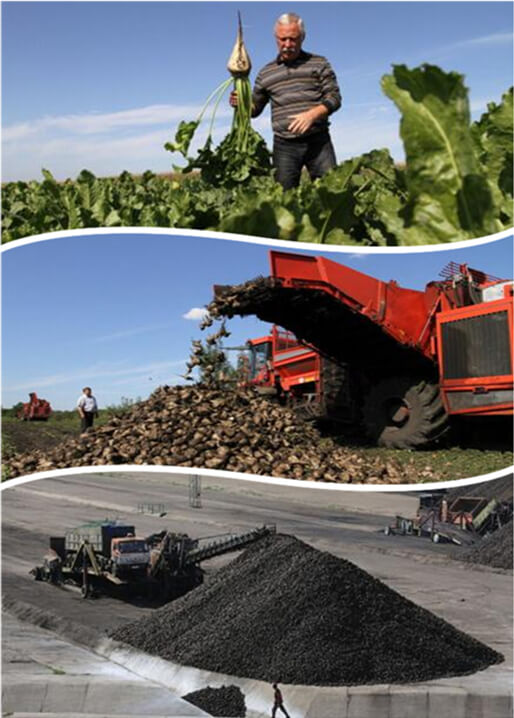
During September-October, the harvest season of beet in different regions are coming. After harvesting, beet’s storage time needs to be limited to a minimum in order that the sugar content of beet could be kept. Need a little longer storage time? Split pile storage will be suitable for temporary preservation which is split to help ventilation & slow respiration. Beet’s delivery time between harvesting and processing in the factory should be minimized, too in order to maximize sugar yield. In general, the processing factories are usually located near beet fields to shorten delivering time.
2.1.2 Washing and peeling
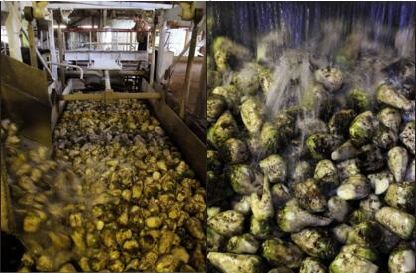
Once uploaded to the factory, beet will get cleaned by Root Vegetable Washing Peeler Machine. When cleaning, the machine’s equipped brush rollers are suitable for removing the surface soil, sand, stones, and weeds. With spray water rinsing, peeled beet could be washed clearly at the same time.
2.1.3 Slicing
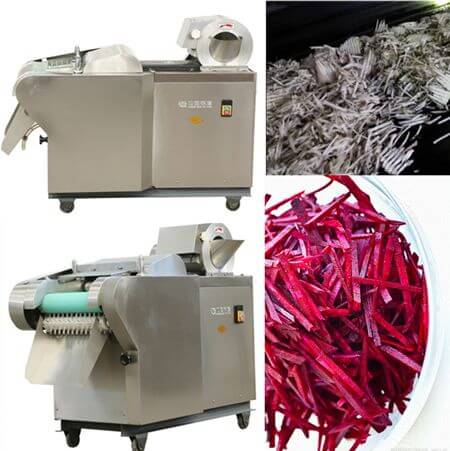
In order to make more sugar content spread out, beet is sent to Directional Vegetable Cutting Machine to be cut into slices or strips. Please note, the cutting thickness is adjustable by increasing or decreasing machine spacers. With higher slicing rate, cutting machine can process 1000 kg beet slices per hour.
2.1.4 Juicing and purifying
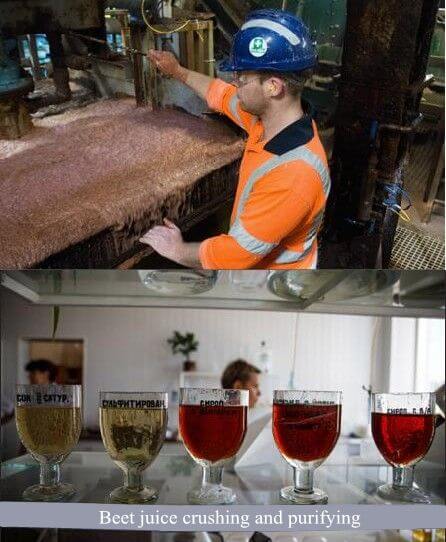
Next, the beet strips are conveyed to Screw Juice Extractor Machine, the strips will be mixed with hot water to dissolve and extract the inside sugar. With functions of crushing, juicing and perforated screen separating, beet juice is extracted and charged out separately from beet pulp, and the extracting process is fully automatic. Please note: beet pulp could be further processed into pet food.
However, beet juice still contains impurities which can’t be filtered by the perforated screen such as mineral salts and betaine. The extracted juice needs to be purified by low-temperature phosphorus floatation and carbonation process. Firstly, add phosphoric acid, milk of lime and flocculant into beet juice until its PH is between 7.2-8.0. Then, skim off the floating impurities gradually by horizontal paddle stirring and the clear juice is separated at the bottom.
2.1.5 Evaporation and crystallization
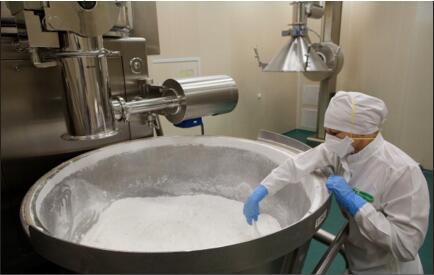 The purified juice still contains 80% water which should be evaporated. In the factory, people use evaporators to fast boil beet juice and evaporate juice to convert juice into syrup by heating evaporators & lowering boiling point. After evaporating, the percentage of sugar in syrup would be up to 65%.
The purified juice still contains 80% water which should be evaporated. In the factory, people use evaporators to fast boil beet juice and evaporate juice to convert juice into syrup by heating evaporators & lowering boiling point. After evaporating, the percentage of sugar in syrup would be up to 65%.
Filtering and boiling the syrup to remove remaining impurities from sugar, then adding a mixture of milled sugar powder & isopropyl alcohol in vacuum pan until syrup begins to form crystals. By adjusting temperature and alcohol additions, crystals are gradually grown to the desired size. However, the finished products are still mixed with a little liquid which could be separated by Centrifugal Dewatering Machine: pour the mixture into dehydrating machine, then the liquid would be centrifuged into the outer shell which could be used as molasses, and the crystals are left in the inner basket.
2.1.6 Drying
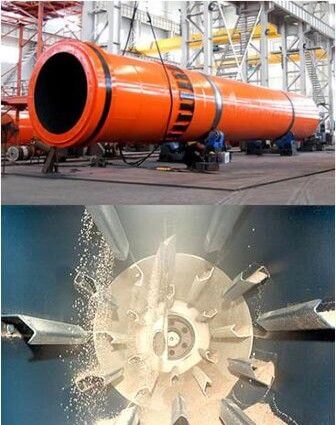
After crystallization, the crystallized sugar is still moist. Therefore, beet sugar needs to be transferred to Rotary Drying Drum and dried by convection air flow. During the drying process, rotary dryer employs a central pipe which sends out hot air and the drum temperature would be controlled as customer’s requirement, under the functions of centrifugation, shear, collision and friction, large and wet sugar particles are micronized and will rise with heated air and get dried. Equipped with counter-current air fan and sturdy cylindrical drum and temperature-controlled system, rotary drying drum is suitable for mass production in beet sugar industry, the pharmaceutical industry, chemical industry, etc.
2.1.7 Packing and storing

After filtering, grading and weighing, the sugar is then packed into bags or other special packages, e.g. as cube, icing sugar, before shipping and storing. Packed beet sugar could be stored for several months in a cool, dark and dry area.
2.2 Beet’s by-products
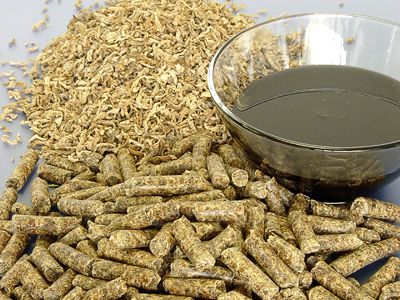 When processing beet sugar, a lot of by-products are produced such as pulp and molasses which are nutritious animal feed. For example, beet pulp, dried residue after sugar is extracted from beet slices, could be dried and formed into pellets to be used as animal fodder. Beet molasses is produced after crystallization, molasses is used as animal fodder as well as in producing industrial alcohol, yeast, and organic chemicals.
When processing beet sugar, a lot of by-products are produced such as pulp and molasses which are nutritious animal feed. For example, beet pulp, dried residue after sugar is extracted from beet slices, could be dried and formed into pellets to be used as animal fodder. Beet molasses is produced after crystallization, molasses is used as animal fodder as well as in producing industrial alcohol, yeast, and organic chemicals.
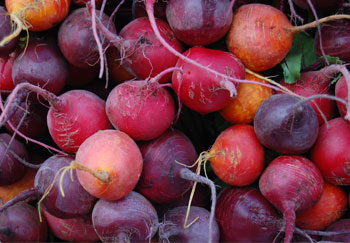
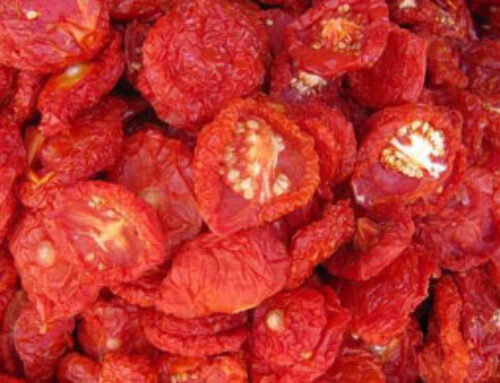
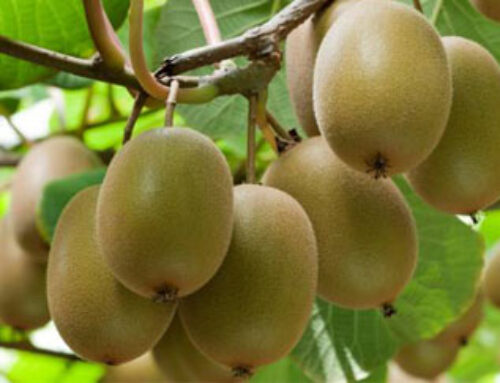
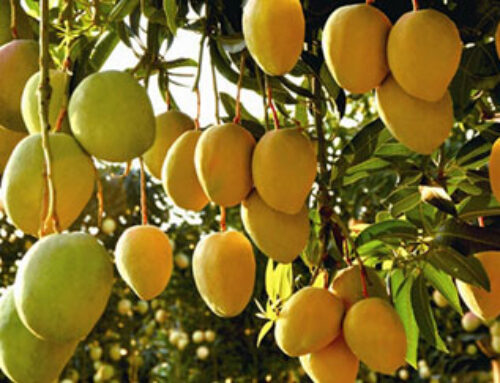
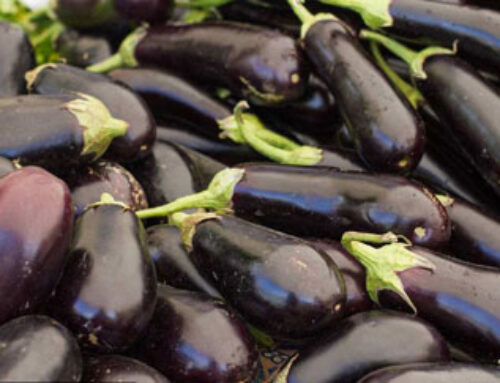

Leave A Comment